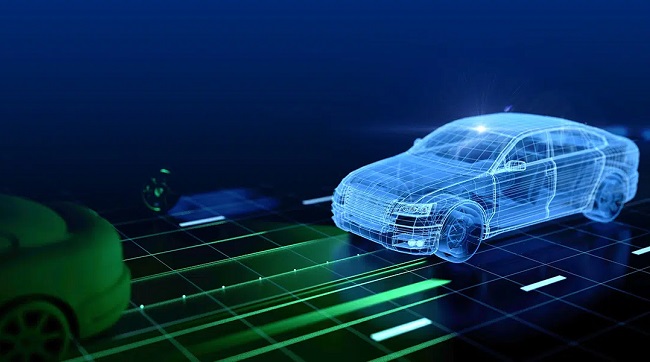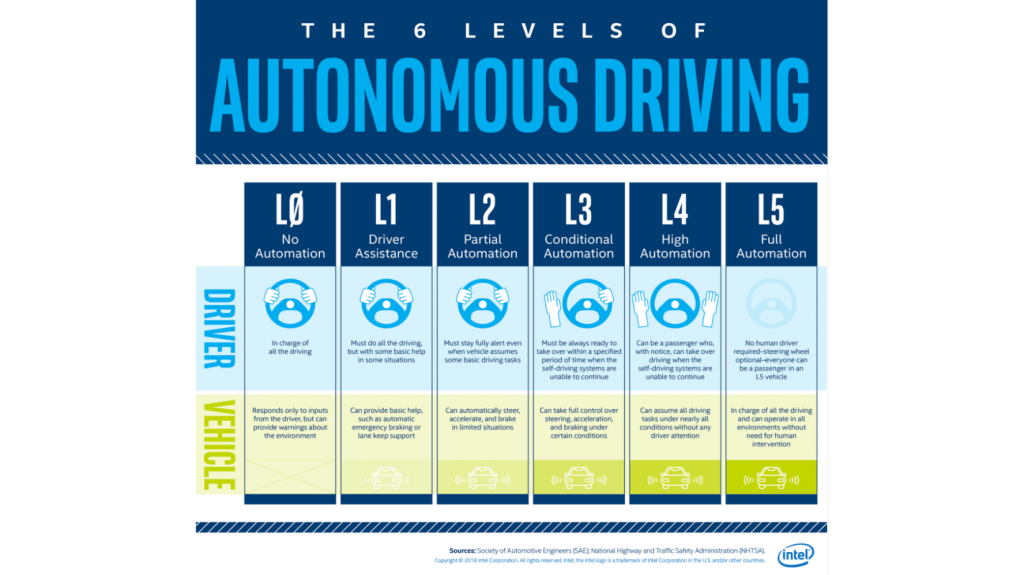The ADAS and DMS Explainer

Autonomous Driving (AD) has been a buzz word for a few years now and a lot of progress has been made towards getting to a true ‘Driverless Car.’ While fully autonomous cars are a long way away, especially in a country like India, there is another term that is catching the fancy of the public: ADAS—or Advanced Driver Assistance Systems.
Unfortunately, the terms ADAS and AD are used interchangeably, which has led to an impression that a vehicle with ADAS is a semi-autonomous or a fully autonomous vehicle. Another offering that is popular today is the Driver Monitoring System (DMS). DMS systems are intended to monitor a driver through an inward facing camera and attempt to identify driver distraction, drowsiness, and compliance items through the use of AI based algorithms. This article debunks the myths and misunderstandings of ADAS and how a DMS System can complement an ADAS system to help enhance vehicle and driver safety and reduce likelihood of accidents.
ADAS Systems
We will start with the ADAS system. In order to understand ADAS systems, one must first be familiar with the different levels in the path to fully autonomous driving. This is fairly standardized, although there maybe slight variations of the same put out by different entities.
Keeping these 6 levels in mind, let us come back to the concept of ADAS. An ADAS system in a vehicle can be a Level 0 System, or it can even be a Level 3 system. Where an ADAS system fits in is decided by the features and the assistance it provides. As we move across the levels mentioned above, we progress from a ‘Driver Assistance System’ to a fully ‘Autonomous Driving’ System. In this article, we will limit our discussion to Level 0 to Level 2.
One of the fundamental metrics for any ADAS Systems is Time to Collision Metric (TTC). TTC is a threshold based on which a system decides what intervention needs to be done. For example: The TTC threshold for a collision warning is 3 seconds. This is based on several internal and independent studies which have shown that 2-2.5 seconds of warning to a distracted driver can prevent or mitigate 80-90% of all rear end collisions.

Let us now dive a little deeper into ADAS Systems and examine typical features at Level 0 to Level 2 and how these are differentiated.
Level 0 ADAS Systems
Level 0 systems have no autonomous safety assist features. Such systems are usually ‘warning or passive’ systems. They can assist by constantly monitoring the road in front primarily through vision sensors and can provide appropriate warnings for the driver in the form of audio and visual alerts. The key point to note here is that Level 0 systems do not take any action automatically. The vehicle is fully under the control of a driver and the driver is expected to take steps to prevent or mitigate an adverse event from happening.
Level 0 ADAS systems usually provide the following kind of alerts:
- Forward Collision Warning (FCW): Alerts up to 3 seconds before an imminent rear-end collision with a vehicle or a motorcycle
- Pedestrian Collision Warning (PCW): Alerts up to 2.1 seconds before an imminent collision with a pedestrian or a cyclist
- Headway Monitoring & Warning (HMW): Helps keep a safe distance from the vehicle ahead, alerts the driver if the distance becomes unsafe (tailgating)
- Lane Departure Warning (LDW): Alerts when there is an unsignaled deviation from the driving lane
Level 0 ADAS Systems are mostly after-market systems. The major advantage is that such systems can be installed on any vehicle running on the road today. A good example of a Level 0 ADAS system is the Mobileye® 8 Connect which is now available in India for commercial fleets through Intel® Onboard Fleet Services.
Level 1 ADAS Systems
Level 1 Systems usually have one or more active safety features. The system will give a warning like in the Level 0 system, but if the driver has not responded to the warning and the situation warrants it, the system can do an active intervention on behalf of the driver. Level 1 systems normally can do only one intervention at a time by controlling either one of the brakes, accelerator or steering depending on the situation.
Level 1 ADAS Systems provide the following interventions:
- Automated Emergency Braking (AEB): The System can automatically apply the vehicle brakes without driver intervention. AEB is usually triggered after 2 levels of warnings and there are controls on how much braking is done. For example: If the vehicle is at speeds of >50kmph, the AEB trigger will only be to bring down the speed to 30kmph and will not attempt a complete halt.
- Adaptive Cruise Control (ACC): Once a cruise control at a certain speed is set, based on the headway to the vehicle in front, the system can automatically decrease speed if headway falls below a threshold and will increase speed to the set level once the headway increases to a safe level.
- Lane Keep Assist (LKA): If the system notices an unintentional deviation from the driving lane, it can automatically correct this by controlling the steering and bringing the vehicle back into the lane.
- Level 1 ADAS systems are normally integrated by the OEM (Original Equipment Manufacturer) itself as part of a vehicle design. Because of this it can provide ‘active features’ as described above, but on the downside, the design cycle is long and hence vehicles with ADAS Level 1 systems are very limited and have just started coming into the Indian market. An example of a vehicle with a Level 1 System is the Mahindra XUV 700 which has ADAS technology implemented by Mobileye.
Level 2 ADAS Systems
In addition to providing the active safety features of Level 1, Level 2 systems can automatically control more than one aspect of the vehicle. This enables a level 2 system to not just assist the driver in emergency situations, but also help in regular driving situations. The system can control the accelerator, steering and brake in unison which sets the stage for ‘hands and legs free’ driving in limited situations. Level 2 systems usually have multiple sensors including Vision and Lidar based sensors.
Some situations where Level 2 Systems can independently handle the vehicle are:
- Automatic Parking: The system can help automatically park the vehicle into a designated slot without any input from the driver.
- Traffic Jam Assist (TJA): In slow speed-stop start situations, the system can take control of the vehicle without the need for the driver to intervene.
- Level 2 ADAS Systems are the starting point towards true autonomous driving. Distinctions in Level 3,4 and 5 are continuously changing as this is an evolving space, but the progress is towards enhancing and refining these to get to the fully autonomous goal.
DMS – Driver Monitoring Systems
DMS systems complement ADAS systems by providing Distraction and Drowsiness related alerts to the driver. A typical DMS system consists of an inward facing camera mounted facing the driver. The DMS system constantly scans key parameters of the drivers face like face position, eye movements, eyelid closure and uses this information to identify if a driver is distracted or drowsy. In addition, the camera can also identify compliance related activities like seat belt status, smoking and phone use. Below are some of the standard alerts a DMS System provides.
| Class of Features | Features |
|---|---|
| Driver drowsiness | Detection of fatigueYawns |
| Driver distraction | Driver not looking at the center of the roadMobile phone use |
| Compliance | Seat belt usageMask usageSmoking |
| Other | Driver erollment and identificationTamper proofing |
| Video snapshots | Local storage and/or online upload of video clips of the alerts |
While DMS as a stand-alone system is very useful for identifying and alerting drivers, the real power of DMS comes to light when it is combined with an outward facing ADAS system. For example, a drowsiness alert along with a Forward Collision Warning Alert can help a drowsy driver take preventive action in a timely manner.
It is also important to note that DMS systems are focused on identifying and alerting in adverse situations. A DMS system typically does not record audio, nor does it do a continuous recording of the driver.
In conclusion, as ADAS is becoming more popular and relevant in the Indian context, the focus should start with Level 0 systems which can be enabled via an aftermarket installation. Intel in partnership with Mobileye (an Intel company) which is the world leader in ADAS and AD systems have now launched Intel Onboard Fleet Services targeted to bring the technology of ADAS into the aftermarket space in India with special focus on the commercial segment. In addition, by working with our DMS partner, we also enabled the integration of data from the DMS and ADAS systems through an integrated cloud portal that gives consolidated analytics and reports through one single interface.
Author:
Rajeev Rajasekharan
Customer Experience Engineering
Intel Corporation

